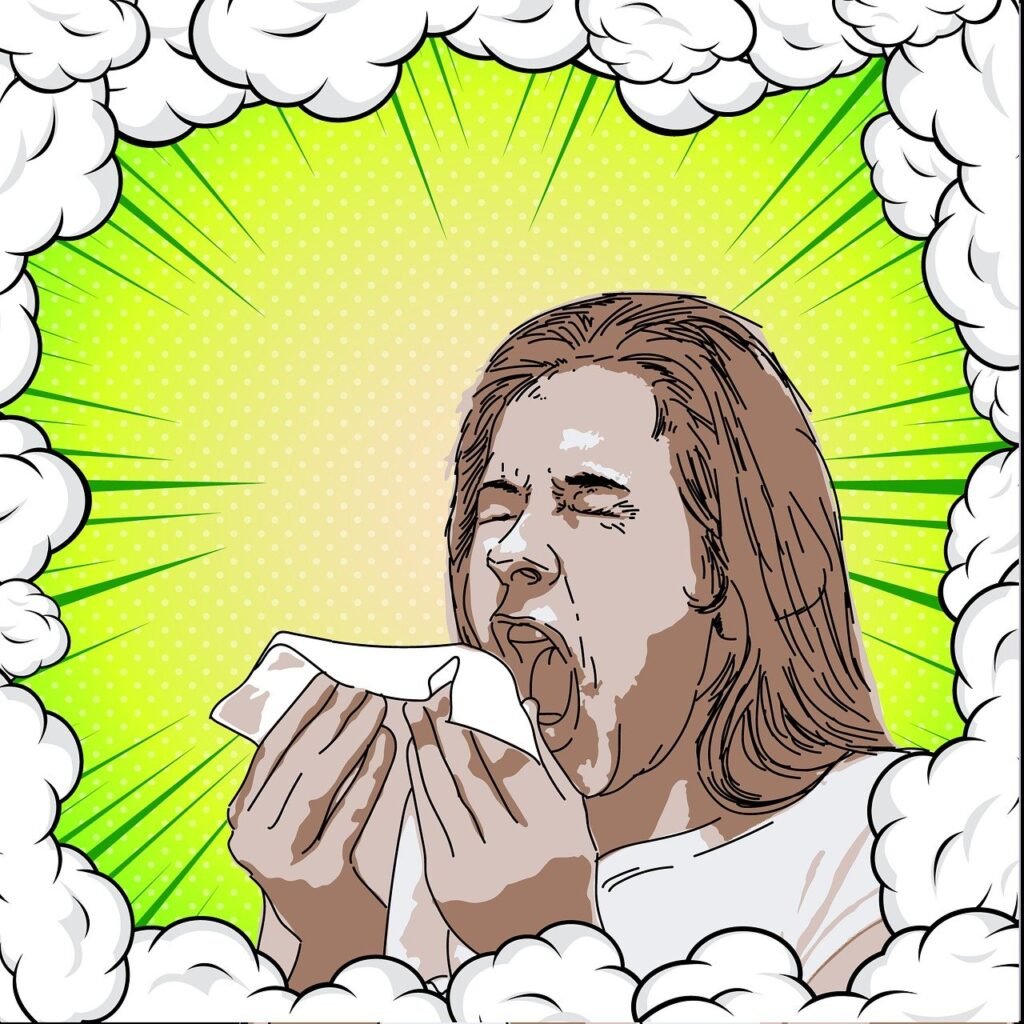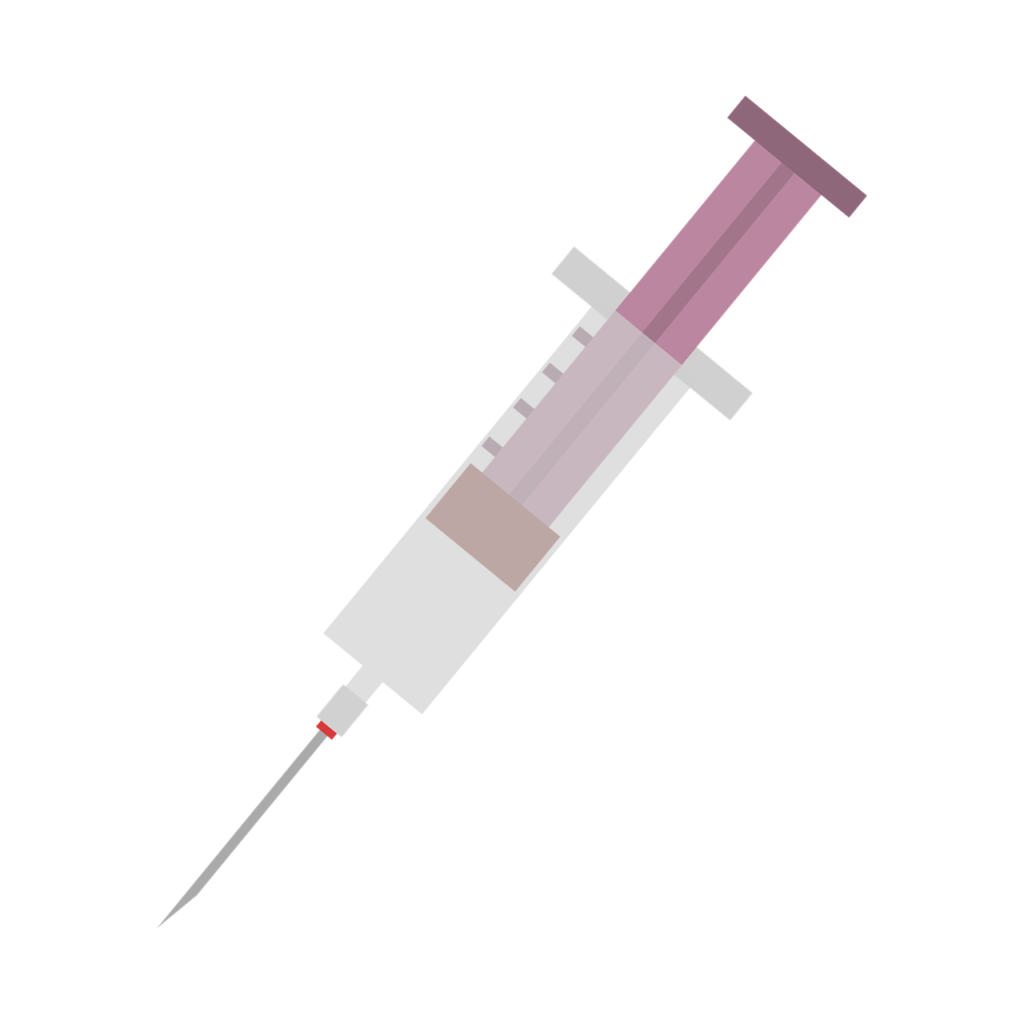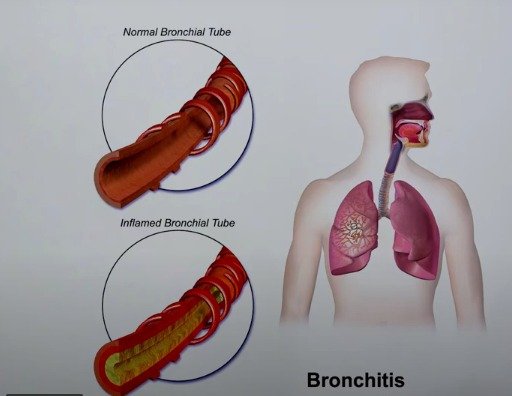Bronchitis: Causes, Symptoms, and Effective Home Remedies
Bronchitis is a common respiratory condition characterized by inflammation of the mucous membrane lining the bronchi and bronchial tubes in the chest. It affects the expiratory function and often accompanies infections in the nose and throat. While it is more prevalent in cold, damp climates, it can occur anywhere.
1. Introduction to Bronchitis
Bronchitis, whether acute or chronic, poses challenges to respiratory health. It involves inflammation of the bronchial tubes, leading to symptoms such as coughing, wheezing, and difficulty breathing.
Understanding Bronchitis: How Long Do Symptoms Last?
Bronchitis, whether acute or chronic, can cause discomfort and impact daily life. Knowing how long its symptoms last is crucial for managing the condition effectively. In this comprehensive guide, we explore the duration of bronchitis symptoms, its causes, contagiousness, home remedies, when to seek medical help, and the overall outlook for recovery.
Symptoms of Bronchitis
Acute bronchitis typically lasts from 10 to 14 days, although coughing may persist for up to a month. In contrast, chronic bronchitis persists for at least three months, with episodes recurring for two or more years. Symptoms include coughing, rapid breathing, confusion (especially in older adults), and a chronic, phlegmy cough in chronic cases.
Causes of Bronchitis
Bronchitis can result from viral or bacterial infections. While viruses, such as the flu virus, are the primary culprits for acute bronchitis, chronic bronchitis often stems from cigarette smoking or exposure to environmental toxins like air pollution. Antibiotics are typically ineffective against viral bronchitis.
Contagiousness
Acute bronchitis caused by viruses is highly contagious, with a transmission window of two to six days before symptoms appear. Bacterial bronchitis is less contagious, especially after antibiotic treatment. Chronic bronchitis is generally not contagious, but coexisting acute bronchitis can be.
Home Remedies
Several home remedies can alleviate bronchitis symptoms, including adequate rest, hydration, humidification, over-the-counter pain medication, and herbal supplements like ginger or garlic. Avoiding cigarette smoke and airborne irritants is crucial for recovery.
Seeking Medical Help
While acute bronchitis often resolves on its own, persistent or worsening symptoms warrant medical attention. Consult a doctor if you experience frequent episodes of acute bronchitis, prolonged coughing, shortness of breath, coughing up blood, or symptoms that don’t improve.
Outlook
The prognosis for bronchitis depends on its type and individual health factors. Most cases of acute bronchitis resolve without medical intervention, while chronic bronchitis may require ongoing management. Early detection and proper care are essential for optimal recovery.
2. Understanding Acute and Chronic Bronchitis
Acute bronchitis typically lasts for a short duration and often follows a viral infection. In contrast, chronic bronchitis is a long-term condition characterized by persistent inflammation of the bronchial tubes.
Understanding Acute Bronchitis: Symptoms, Causes, Treatment, and More
Acute bronchitis can be a distressing respiratory condition, but with the right knowledge, you can manage it effectively. In this comprehensive guide, we’ll delve into the symptoms, causes, treatment options, and preventative measures for acute bronchitis to help you navigate this common ailment with confidence.
Symptoms of Acute Bronchitis and Chronic Bronchitis
Acute bronchitis often starts with symptoms similar to those of a cold or flu, including a runny nose, sore throat, tiredness, and sneezing. As the condition progresses, you may experience:
- Wheezing
- Feeling cold easily
- Back and muscle aches
- Fever ranging from 100°F to 100.4°F
The hallmark symptom of acute bronchitis is a persistent cough, which may initially be dry but can later become productive, producing mucus. While most symptoms resolve within 10 days to three weeks, prolonged coughing may persist for several weeks.
Diagnosis of Acute Bronchitis
Diagnosing acute bronchitis typically involves a physical examination by a healthcare professional. They’ll listen to your lungs, inquire about your symptoms, and may recommend tests such as chest X-rays or blood tests to rule out other conditions like pneumonia.
Treatment Options
While acute bronchitis often resolves without medical intervention, there are several home care tips that can help alleviate symptoms:
- Over-the-counter nonsteroidal anti-inflammatory drugs (NSAIDs) like ibuprofen or naproxen for throat soreness
- Use of a humidifier to moisten the air and loosen mucus
- Increased fluid intake to thin out mucus
- Incorporating ginger or dark honey into your diet for their anti-inflammatory and soothing properties
However, if symptoms worsen or you experience difficulty breathing, it’s essential to seek medical attention promptly.
Acute Bronchitis in Children
Children are more susceptible to acute bronchitis due to various factors such as increased exposure to viruses and underlying health conditions like asthma or allergies. Treatment for children largely mirrors that of adults, focusing on rest, hydration, and fever management.
Causes and Risk Factors
Acute bronchitis can be caused by viral or bacterial infections, environmental irritants, or underlying lung conditions. Viral infections account for the majority of cases, often stemming from the same viruses responsible for the common cold or flu. Environmental factors like smoke or chemical fumes can also trigger inflammation in the bronchial tubes.
Bronchitis vs. Pneumonia
While both bronchitis and pneumonia affect the lungs, they differ in their causes and affected areas. Bronchitis primarily inflames the bronchial tubes, whereas pneumonia affects the alveoli, small sacs at the ends of the bronchioles. Proper diagnosis is essential for appropriate treatment.
Contagiousness and Outlook
Acute bronchitis is contagious, spreading through respiratory droplets expelled during coughing or sneezing. Most cases resolve within a few weeks, but complications can arise, especially in vulnerable individuals. Preventative measures such as hand hygiene, avoiding irritants, and vaccinations can reduce the risk of infection.
Prevention Strategies
While it’s challenging to prevent acute bronchitis entirely, adopting healthy habits like adequate sleep, handwashing, and avoiding tobacco smoke can lower your risk. Additionally, getting vaccinated against common respiratory infections like the flu and pneumonia can provide added protection.
Acute bronchitis can be disruptive, but with proper care and preventive measures, you can minimize its impact on your health and well-being. If you experience persistent or severe symptoms, don’t hesitate to consult a healthcare professional for personalized guidance and support.
Inhalers and Nebulizer Treatments for Bronchitis: What You Need to Know
Dealing with bronchitis can be exhausting, especially when the coughing, chest soreness, and fatigue seem relentless. While acute bronchitis often resolves on its own, chronic or severe cases may require additional treatment. In this guide, we’ll explore the various types of inhalers and nebulizer treatments used to manage bronchitis symptoms effectively.
Types of Inhalers
Inhalers are a popular choice for delivering medications directly to the lungs. They come in different forms, each serving a specific purpose:
- Beta-2 Agonists: These inhalers, such as albuterol and salbutamol, are commonly used to treat conditions like asthma, COPD, and acute bronchitis. They work by relaxing the airway passages, making breathing easier. While evidence supporting their effectiveness in acute bronchitis is limited, they may benefit individuals prone to wheezing.
- Inhaled Corticosteroids: These medications help reduce airway inflammation, which is beneficial in bronchitis cases accompanied by significant irritation and mucus production. Examples include beclomethasone, budesonide, and fluticasone.
- Long-Acting Beta-2 Agonists (LABAs): LABAs like arformoterol tartrate and formoterol fumarate are not intended for acute symptom relief but rather for long-term management of bronchial issues. They are often prescribed alongside inhaled corticosteroids.
Nebulizer Treatments
Nebulizers offer an alternative method of delivering medication, particularly suitable for children or individuals requiring larger doses. Unlike inhalers, nebulizers convert medication into a fine mist, which is then inhaled through a mask or mouthpiece. Common medications administered via nebulizers include:
- Long-Acting Beta-2 Agonists (LABAs): Similar to inhalers, LABAs can be administered through nebulizers for individuals requiring extended bronchial support.
- Long-Acting Muscarinic Agents (LAMAs): These medications target different receptors in the lungs to help open up airways. Examples include umeclinium and tiotropium.
- Short-Acting Beta-Agonists (SABAs): Albuterol, commonly used in inhalers, can also be administered via nebulizers for acute bronchitis episodes.
- Short-Acting Muscarinic Antagonists (SAMAs): Medications like ipratropium bromide are used to treat chronic bronchitis and COPD.
Other Inhalations
In addition to traditional inhalers and nebulizers, some individuals find relief through steam or mist therapy. Inhaling warm, humidified air can help soothe irritated lungs and alleviate coughing. Methods include inhaling steam from a bowl of boiling water, taking hot showers, or using humidifiers. However, these methods may not be as effective for acute bronchitis and should be used with caution.
Side Effects and Recovery
Side effects of inhalers and nebulizer treatments vary depending on the medication used. Common side effects may include tremors, dry mouth, or heart palpitations. It’s essential to discuss any adverse reactions with your doctor to explore alternative options.
With proper treatment and rest, most individuals recover from bronchitis within 1 to 2 weeks. However, if symptoms persist beyond 3 weeks or worsen, it’s advisable to consult a healthcare professional for further evaluation. Persistent coughing may indicate underlying conditions like asthma or sinusitis, which require targeted treatment.
When to Seek Medical Advice
If your symptoms interfere with daily activities or persist despite treatment, it’s crucial to seek medical advice promptly. Fever accompanied by severe coughing may indicate a bacterial infection, warranting antibiotic therapy. Additionally, worsening symptoms such as shortness of breath or confusion require immediate medical attention to rule out complications like pneumonia.
In conclusion, while inhalers and nebulizer treatments can provide relief for bronchitis symptoms, they should be used under medical supervision and alongside other recommended therapies. If you’re experiencing persistent or severe symptoms, don’t hesitate to reach out to your healthcare provider for personalized guidance and support.

3. Can Allergies Cause Bronchitis?
Overview
Bronchitis can be acute, meaning it’s caused by a virus or bacteria, or it can be caused by allergies. Acute bronchitis usually goes away after a few days or weeks. Allergic bronchitis is chronic, and may be caused by exposure to allergy triggers like tobacco smoke, pollution, or dust. You may also hear it called chronic bronchitis.
Chronic bronchitis is part of chronic obstructive pulmonary disease (COPD), along with emphysema. Chronic bronchitis can last for months or longer.
Bronchitis is inflammation or swelling of the bronchial tubes that carry air into your lungs. When you have bronchitis, your airways also produce too much mucus. Mucus normally protects your lungs by trapping bacteria, dust, and other particles before they can get in. Too much mucus makes it harder to breathe. People with bronchitis often cough a lot and have trouble breathing.
Keep reading to learn more about allergic or chronic bronchitis.
Symptoms
Coughing is the main symptom of both acute and allergic bronchitis. With acute bronchitis, the cough usually goes away after a few days or weeks. A chronic allergic bronchitis cough can last for many weeks or months.
When you cough you’ll bring up a thick, slimy fluid called mucus. In acute bronchitis, the mucus can be yellow or green. Chronic bronchitis mucus is usually clear or white.
Aside from the cough, acute and allergic bronchitis have different symptoms.
| Chronic bronchitis symptoms | Acute bronchitis symptoms |
| cough that lasts for many weeks or even months | cough that lasts a few days or weeks |
| productive cough produces clear mucus or white | productive cough produces yellow or green mucus |
| wheezing | fever |
| pressure or tightness in chest | chills |
| fatigue |
Causes
Cigarette smoking is the most common cause of chronic bronchitis. Smoke is filled with dangerous chemicals. When you breathe in cigarette smoke, it irritates the lining of your airways and makes your lungs produce extra mucus.
Other causes of chronic bronchitis include:
- air pollution
- chemical fumes
- dust
- pollen
Risk factors
Smoking tobacco products is one of the biggest risks for allergic bronchitis. You’re also more likely to get this condition if you:
- are older than 45
- work in a job where you’re exposed to dust or chemical fume, such as coal mining, textiles, or farming
- live or work in an area with a lot of air pollution
- are female
- have allergies
Diagnosis
Call your doctor for an appointment if:
- you have a cough that lasts for more than three weeks
- you cough up blood
- you’re wheezing or short of breath
Your doctor will do a physical examination and ask about your medical history and symptoms. Your doctor might ask:
- How long have you been coughing?
- How often do you cough?
- Do you cough up any mucus? How much? What color is the mucus?
- Do you smoke? For how long have you smoked? How many cigarettes do you smoke each day?
- Are you often around someone who smokes?
- Have you recently had a cold- or flu-like infection?
- Are you exposed to chemical fumes or dust at work? What types of chemicals are you exposed to?
Your doctor will also listen to your lungs with a stethoscope. You may have other tests for allergic bronchitis, such as:
- Sputum tests. Your doctor will check a sample of the mucus you cough up to see if you have an infection or allergies.
- Chest x-ray. This imaging test looks for any growths or problems with your lungs.
- Lung function test. You’ll blow into a device called a spirometer to see how strong your lungs are and how much air they can hold.
Treatment
Your doctor may prescribe or recommend one or more of these treatments to open up your airways and help you breathe easier.
Bronchodilators
Bronchodilators relax muscles around the airways to open them up. You breathe in the medicine through a device called an inhaler.
Short-acting bronchodilators start to work quickly. Examples of short-acting bronchodilators include:
- ipratropium (Atrovent)
- albuterol (Proventil HFA, ProAir, Ventolin HFA)
- levalbuterol (Xopenex)
Long-acting bronchodilators go to work more slowly, but their effects last for 12 to 24 hours. These medicines include:
- tiotropium (Spiriva)
- salmeterol (Serevent)
- formoterol (Foradil)
Steroids
Steroids bring down swelling in your airways. Usually you breathe in steroids through an inhaler. Examples include:
- budesonide (Pulmicort)
- fluticasone (Flovent, Arnuity Ellipta)
- mometasone (Asmanex)
You may take a steroid along with a long-acting bronchodilator.

Oxygen therapy
Oxygen therapydelivers oxygen to your lungs to help you breathe. You wear prongs that go in your nose or a mask that fits over your face. Your doctor will determine if you need oxygen therapy based on your oxygen saturation at rest and with exercise.
Humidifier
To help you breathe at night, you can turn on a warm mist humidifier. The warm air helps loosen up the mucus in your airways. Wash the humidifier often to prevent bacteria and other germs from growing inside.
Pulmonary rehabilitation
This is a program to help you breathe better. During pulmonary rehabilitation, you’ll work with doctors, nurses, and other specialists. The program can include:
- exercises to improve breathing
- nutrition
- methods to help you conserve energy
- tips to help you breathe better
- counseling and support
Breathing techniques
People with chronic bronchitis often breathe too quickly. Breathing techniques like pursed-lip breathing can help slow your breathing rate. With this method, you breathe through pursed lips, as if you were going to kiss someone.
Vaccines
Allergic bronchitis can increase your risk for lung infections. Getting the following vaccines can help you stay healthy:
- a flu shot once a year
- a pneumonia shot every five or six years
Outlook
The word “chronic” in “chronic bronchitis” means it sticks around for a long time. Your cough and shortness of breath may never fully go away. Treatments like medicine and oxygen therapy can ease your symptoms and help you get back to a more normal life.
Prevention
The best way to prevent allergic bronchitis is to quit smoking. Kicking the habit will also protect you from other diseases, like cancer and heart disease. Ask your doctor to recommend a quit-smoking method, such as nicotine replacement or medicines that cut cravings.
Learn more: The 8 best quit smoking blogs of 2016 »
Here are some other ways to protect your lungs:
- If you work with or around chemicals, make sure that the area is well ventilated.
- If the ventilation is poor, use a respirator. This device fits over your nose and mouth. It cleans the air before it gets into your lungs.
- At home, avoid breathing in any fumes. Don’t use spray chemicals like paint, hair spray, household cleaners, or bug spray indoors. If you do have to use these products, open the windows or do it in a well-ventilated, open area like an open garage. You can also wear a mask when you spray to protect your lungs.
- Put on a mask whenever you work in the yard so you don’t breathe in dust, pollen, and other irritants.
- If dust, pollen, or other allergy triggers cause your bronchitis symptoms, see an allergist. Allergy shots or medicines can stop you from reacting to your triggers.
Bronchiolitis vs. Bronchitis: Understanding the Differences
When it comes to respiratory infections, understanding the disparities between bronchiolitis and bronchitis is crucial. Despite their similar names, these conditions affect different age groups and have distinct characteristics. Let’s delve into the disparities, symptoms, causes, diagnosis, treatment, and prevention strategies for both bronchiolitis and bronchitis.
Understanding the Basics
- Bronchitis: Primarily affecting older children and adults, bronchitis involves inflammation of the trachea and upper bronchial tubes. It can be acute or chronic, causing symptoms such as coughing, mucus production, and chest discomfort.
- Bronchiolitis: Predominantly impacting infants and toddlers, bronchiolitis targets the smallest airways in the lungs, known as bronchioles. It results in swelling and obstruction, leading to breathing difficulties and other symptoms like coughing and wheezing.
Symptoms
- Bronchitis Symptoms: Include cough, mucus production, shortness of breath, fever, chills, fatigue, and chest tightness. Persistent symptoms or those accompanied by wheezing or blood-tinged mucus warrant medical attention.
- Bronchiolitis Symptoms: Manifest as dry, raspy cough, wheezing, difficulty feeding (especially in infants), fever, and nasal congestion. Seek medical advice if your child exhibits signs of breathing difficulty, high fever, lethargy, or bluish discoloration.
Causes and Risk Factors
- Bronchitis: Often triggered by viral infections like the flu or common cold, with chronic cases linked to smoking and exposure to lung irritants.
- Bronchiolitis: Primarily caused by respiratory syncytial virus (RSV) but can also result from other viruses like those causing the common cold or flu. Premature birth, underlying health conditions, and daycare attendance heighten the risk.

Diagnosis and Treatment
- Bronchitis Diagnosis: Involves physical examination, lung auscultation, and possibly chest X-rays or sputum tests to rule out other conditions.
- Bronchiolitis Diagnosis: Relies on medical history, physical examination, and diagnostic tests like mucus sampling or blood tests to detect viral infections.
- Bronchitis Treatment: May include antibiotics for bacterial infections, cough medicine (sparingly), inhalers, steroids, or pulmonary rehabilitation for chronic cases.
- Bronchiolitis Treatment: Focuses on supportive care, such as elevating the baby’s head during sleep, ensuring hydration, and providing supplemental oxygen or IV fluids if necessary.
Outlook and Prevention
- Bronchitis Outlook: Typically resolves without complications but can lead to pneumonia or indicate underlying conditions like COPD.
- Bronchiolitis Outlook: Most cases are mild and self-limiting, but severe cases may cause recurrent wheezing and reduced quality of life. Practice good hygiene, avoid cigarette smoke, and consider annual flu vaccination to prevent both conditions.
Understanding the nuances between bronchiolitis and bronchitis empowers individuals to recognize symptoms promptly, seek appropriate medical care, and adopt preventive measures to safeguard respiratory health. Whether it’s providing comfort to a coughing child or managing persistent bronchial symptoms in adults, awareness and proactive health practices are essential for optimal well-being.
5. Dietary Recommendations for Bronchitis
Diet plays a crucial role in managing bronchitis. Patients are advised to adopt a diet rich in fruits, vegetables, nuts, and whole grains while avoiding refined foods, meats, and sugary products.
6. Home Remedies for Bronchitis
Natural remedies like turmeric powder, ginger, pepper, cloves, and onions can help alleviate symptoms of bronchitis. These ingredients possess anti-inflammatory and expectorant properties, aiding in mucus expulsion and soothing respiratory discomfort.
7. Therapeutic Measures for Bronchitis
Therapeutic measures such as hot poultices, Epsom-salts baths, and breathing exercises can provide relief from bronchitis symptoms. These treatments help reduce inflammation, improve respiratory function, and promote overall well-being.
8. Conclusion
Bronchitis, though common, requires proper management to prevent complications and improve quality of life. By adopting dietary modifications, incorporating natural remedies, and following therapeutic measures, individuals can effectively manage bronchitis and enjoy better respiratory health.

9. FAQs About Bronchitis
Q1: Is bronchitis contagious?
A1: Acute bronchitis caused by viruses can be contagious, especially during the initial stages when symptoms are most severe. However, chronic bronchitis typically isn’t contagious.
Q2: How long does bronchitis usually last?
A2: Acute bronchitis typically lasts for a few weeks, with symptoms gradually improving over time. Chronic bronchitis, on the other hand, is a long-term condition that may persist for months or even years.
Q3: Can bronchitis lead to other respiratory conditions?
A3: In some cases, untreated bronchitis can lead to complications such as pneumonia or exacerbation of underlying respiratory conditions like asthma.
Q4: Are there any preventive measures for bronchitis?
A4: Practicing good hygiene, avoiding exposure to pollutants and irritants, quitting smoking, and maintaining a healthy lifestyle can help reduce the risk of developing bronchitis.
Q5: When should I seek medical attention for bronchitis?
A5: If you experience severe or persistent symptoms of bronchitis, such as high fever, difficulty breathing, chest pain, or prolonged coughing spells, it’s important to consult a healthcare professional for proper evaluation and treatment.
